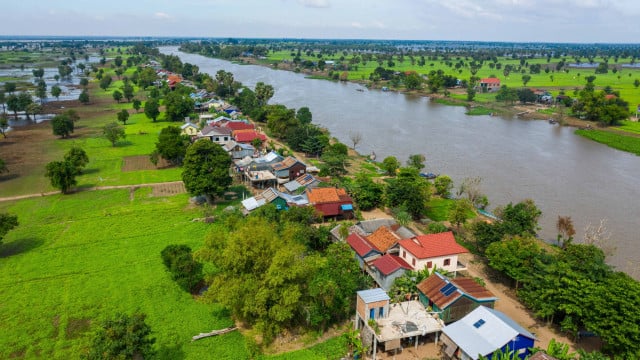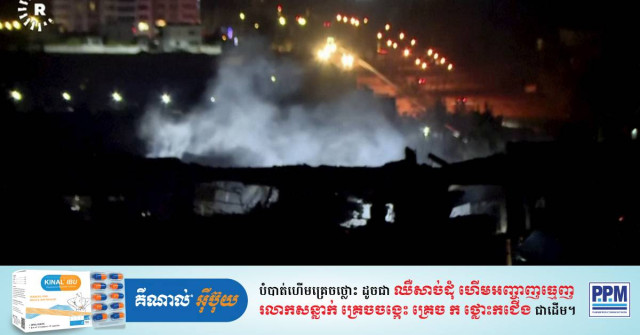Cambodia’s Mine Action Authority Says: Beware of the Explosive Remnants of War in the Rainy Season

- By Teng Yalirozy
- October 1, 2023 6:00 PM
PHNOM PENH— The Cambodian Mine Action Authority (CMAA) has issued a warning to remind the public of the danger that explosive ordnances and remnants of war may present in the rainy season.
“During and after floods, some explosive remnants of war can be spotted due to erosion or runoff that could endanger the lives of people, especially those living in the affected areas,” CMAA said on Oct. 1 in a statement on its Facebook page.
The warning came as some parts of the country such as Kampong Thom, Koh Kong, Kratie, Preah Vihear, Tbong Khmum and Preah Sihanouk provinces have been affected by flooding.
The Pursat River reached such an alarming level in Pursat province that houses were flooded in the city of Pursat.
According to the report of the National Committee for Disaster Management (NCDM) issued on Sept. 28, floods affected 5,299 families in Kampong Thom province, 825 families in Tboung Khmum province, 727 families in Preah Vihear province, and 1,610 families in Kratie province.
On Sept.29, Prime Minister Hun Manet also ordered the authorities to be ready to intervene and help people in provinces affected by floods.
Some roads in Preah Sihanouk and Koh Kong provinces were flooded, but the situation has improved, according to the NCDM report.
The weather conditions are being weakened by the Intertropical Convergence Zone (ITCZ)—a band of low pressure around the Earth lying near the equator—over the Mekong Basin, Thailand and Laos, with weak southwest monsoon winds causing rainfall, which leads to a series of floodings, according to the weather broadcast of the Ministry of Water Resources and Meteorology.
CMAA called on the Ministry of Education, Youth and Sport, the NCDM staff and the Cambodian National Police to spread the information, tell people to report discovered explosive ordnances, provide timely response in the collection of the explosive items, and mark with signs indicating danger areas where there might be such items to prevent people from going near them.
Cambodia is severely impacted by landmines and explosive remnants of war (ERW), with an estimated 4-to-6 million spread over the country during three decades of war. According to a report of Yale University in the United States, U.S. bombings took place over 113,716 sites between 1965 and 1973.
Between 1979 and 2022, Cambodia experienced 19,818 deaths and 45,187 injuries due to landmines, cluster bombs, and ERW explosions, according to CMAA.
The country is aiming at reaching its mine-free goal by 2025. According to CMAA, 2,531 square kilometers of land have been freed of mines between 1992 and 2022 through clearing operations that assured the protection of an estimated 9 million people in the country. According to the United Nations Development Programme’s (UNDP) estimates, around 2,000 square kilometers remain to be cleared.
Mine clearance started in 1992, under the U.N. Transitional Authority in Cambodia (UNTAC), which created the Cambodian Mine Action Center (CMAC), whose role was to implement demining programs throughout the country.
Kep, Preah Sihanouk, Prey Veng, Stung Treng provinces and Phnom Penh have been declared landmine-free in 2022, with 1,705 villages and the capital being free of landmines.
More provinces such as Kampong Cham, Kampong Chhnang, Kampong Speu, Kampot, Kratie, Svay Rieng, Takeo, and Tboung Khmum provinces will soon be declared free of mines.















